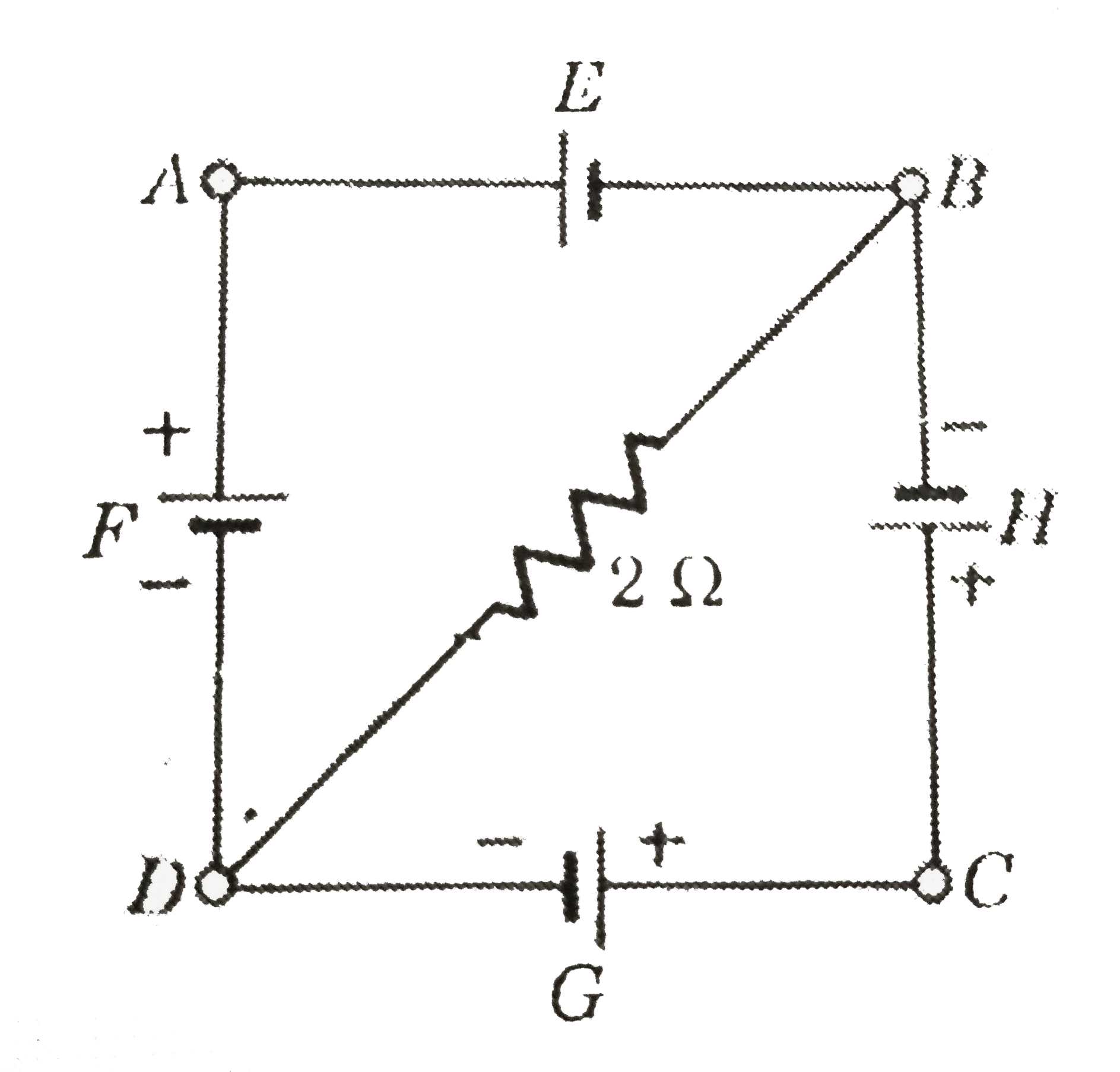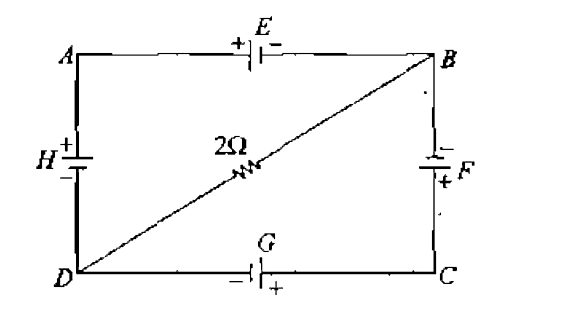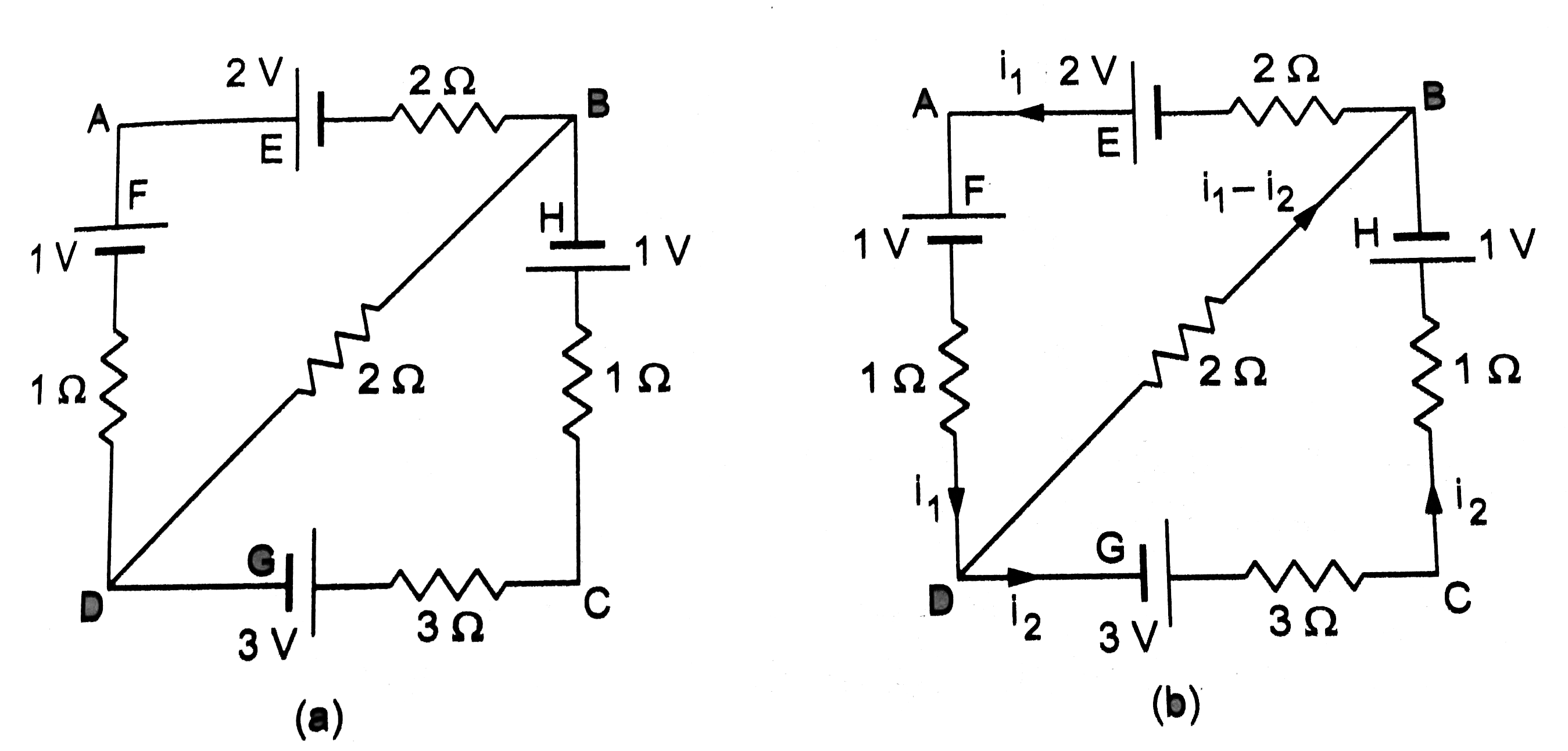
In the circuit shown in figure. The cells E,F,G and H have e.m.f's 2,1,3 and 1 V and internal resistance 2,1,3 and 1Ω respectively. Find the potential differences between points B and D, and across the terminals of the cells G and H.

Step by step video & image solution for In the circuit shown in figure. The cells E,F,G and H have e.m.f's 2,1,3 and 1 V and internal resistance 2,1,3 and 1Omega respectively. Find the potential differences between points B and D, and across the terminals of the cells G and H. by Physics experts to help you in doubts & scoring excellent marks in Class 12 exams.
Topper's Solved these Questions
- BOOK - SL ARORACHAPTER - ELECTRICAL INSTRUMENTSEXERCISE - Problem for self practice81videos
ELECTRICAL INSTRUMENTS
- BOOK - SL ARORACHAPTER - ELECTRICAL INSTRUMENTSEXERCISE - Problem for self practice81videos
ELECTRICAL INSTRUMENTS
- BOOK - SL ARORACHAPTER - ELECTRIC POTENTIAL AND ELECTRIC FLUXEXERCISE - Problems for self practive61videos
ELECTRIC POTENTIAL AND ELECTRIC FLUX
- BOOK - SL ARORACHAPTER - ELECTROMAGNETIC INDUCTIONEXERCISE - All Questions108videos
ELECTROMAGNETIC INDUCTION
Similar Questions
In the circuit shown in figure-3.159 cells E,F,G and H are of EMF 2V, 1V,3V and 1V respevitly and their internal resitance are 2Ω,1Ω,3Ω and 1Ω respectively Calculate
(a) The potential difference between points B and D
(d) The potential difference across the terminals of the cell G and H.
 View Solution
View SolutionIn the circuit, the cells E1andE2 have emfs of 4V and 8V and internal resistance 0.5Ωand1.0Ω, respectively. Calculate the current through 6Ω resistance.
 View Solution
View Solution
Knowledge Check
- Question 1 - Select One
In the circuit shown in figure E,F, G and H are cell of emf 2,1,3, and 1V respectively. The resistances 2,1,3 and 1(Omega)are their respective internal resistance .Calculate (a)the potential difference between B and D and (b) the potential differences across the terminals of each of each of the cells G and H.
 A2112V.B213V.C2114V.D2113V.
A2112V.B213V.C2114V.D2113V. - Question 2 - Select One
In the circuit E,F,G,Hare cell of emf 2,1,3and 1Ω respectively .The potential difference across the terminal of each of the cell G and H are
 A1.46V,1.61VB1.61V,1.46VC2.52V,1.61VD1.61V,2.25V
A1.46V,1.61VB1.61V,1.46VC2.52V,1.61VD1.61V,2.25V - Question 3 - Select One or More
In the circuit shown E,F,G and H are cells of emf 2V,1V,3V and 1V respectively and their internal resistance are 2Ω,1Ω,3Ω and 1Ω respectively.
 AVD−VB=−2/13VBVD−VB=2/13VCVG=21/13V=potential difference across GDVH=19/13V=potential difference across H
AVD−VB=−2/13VBVD−VB=2/13VCVG=21/13V=potential difference across GDVH=19/13V=potential difference across H
In the circuit shown in E, F, G, and H are cells of emf 2,1,3 and 1 V, respectively. The resistances 2Ω,1Ω,3Ωand1Ω are their respectivle internal resistances.

i. Find the potential difference between B and D.
(ii) Calculate the potential differences across the terminals of each of the cells G and H.View SolutionTwo non-ideal batteries have e.m.f 2V and 8V respectively and internal resistance 1 Omega and 2 Omega respectively as shown in the figure. If the potential difference between a and b is zero then the resistance R has a value
_PHY_E01_014_Q01.png) View Solution
View SolutionSeven identical cells each of e.m.f. E and internal resistance r are connected as shown . The potential difference between A and B is
 View Solution
View SolutionFour idential cells each having e.m.f. E, internal resistance r are connected as shown in figure. Find the potential difference between: (i) A and B (ii) A and C
 View Solution
View Solution
In the circuit shown here, cells A and B have emf 10 V each and the internal resistance is 5Ω for A and 3Ω for B. For what value of R will the potential difference across thhe cell A will be zero?View Solution

